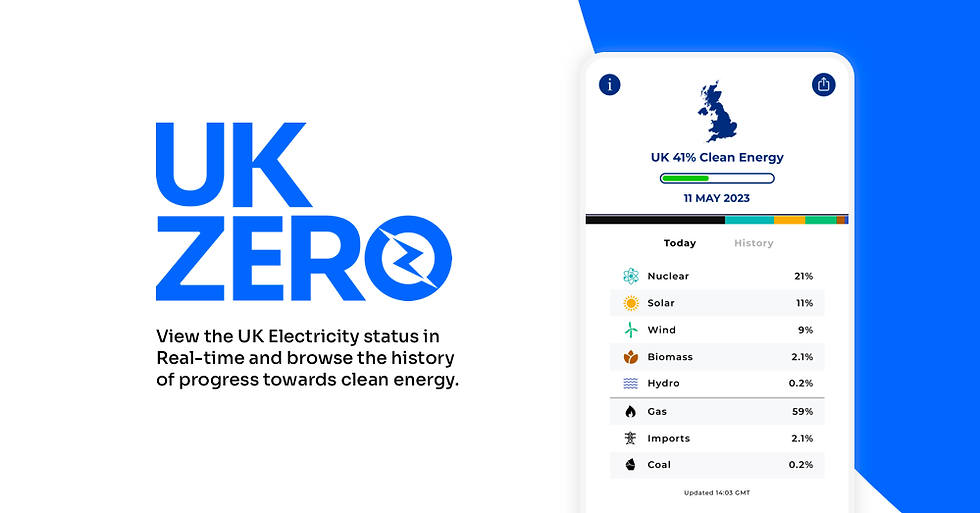Looking at the UK’s energy sources: hydropower
- Simon Mosdal

- May 20, 2024
- 2 min read
Updated: Jun 5, 2024
For centuries, humans have harnessed the power of moving water to generate electricity. Hydropower, a mature and reliable renewable energy source, continues to play a vital role in the UK's energy mix.
Hydropower uses dams and turbines to convert the energy of moving water into electricity. Dams create reservoirs that store water at a higher elevation. The water is then released through a controlled channel, spinning a turbine and generating electricity. The UK's hydropower infrastructure consists of large-scale dams and smaller run-of-river plants using natural water flow variations.
Hydropower is a clean and renewable energy source that generates electricity with minimal greenhouse gas emissions. Hydroelectric plants are reliable and predictable, providing a stable baseload of power to the grid, which is especially valuable when paired with variable renewable sources like wind and solar. Additionally, existing hydropower infrastructure can be efficient and cost-effective, requiring minimal maintenance compared to other energy sources.
However, hydropower also has some drawbacks. Dams can disrupt natural river ecosystems, altering fish migration patterns and impacting aquatic habitats. Large dams can also have significant environmental and social impacts on communities near the construction site. Furthermore, hydropower plants are dependent on sufficient water flow, which can be affected by droughts and climate change.
The future of hydropower in the UK needs to focus on maximising its benefits while minimising its environmental impact. Modernising existing plants and improving fish passage can help mitigate ecological damage. Additionally, exploring the potential of smaller, run-of-river hydro projects can contribute to renewable energy generation without requiring large-scale dam construction.
Though not without its challenges, hydropower remains a crucial source of clean and reliable energy in the UK. Hydropower can continue to contribute to a greener future by prioritising sustainable practices and exploring innovative solutions.
Pros of hydropower:
Renewable and sustainable energy source.
Clean energy production with minimal greenhouse gas emissions.
Reliable and predictable electricity generation.
Existing infrastructure can be efficient and cost-effective.
Cons of hydropower:
Dams can disrupt natural river ecosystems.
Large dams can have environmental and social impacts.
Reliant on sufficient water flow, vulnerable to droughts.
Join the movement! Download UK Zero, connect with others, and let's work together for a sustainable future.




Comments